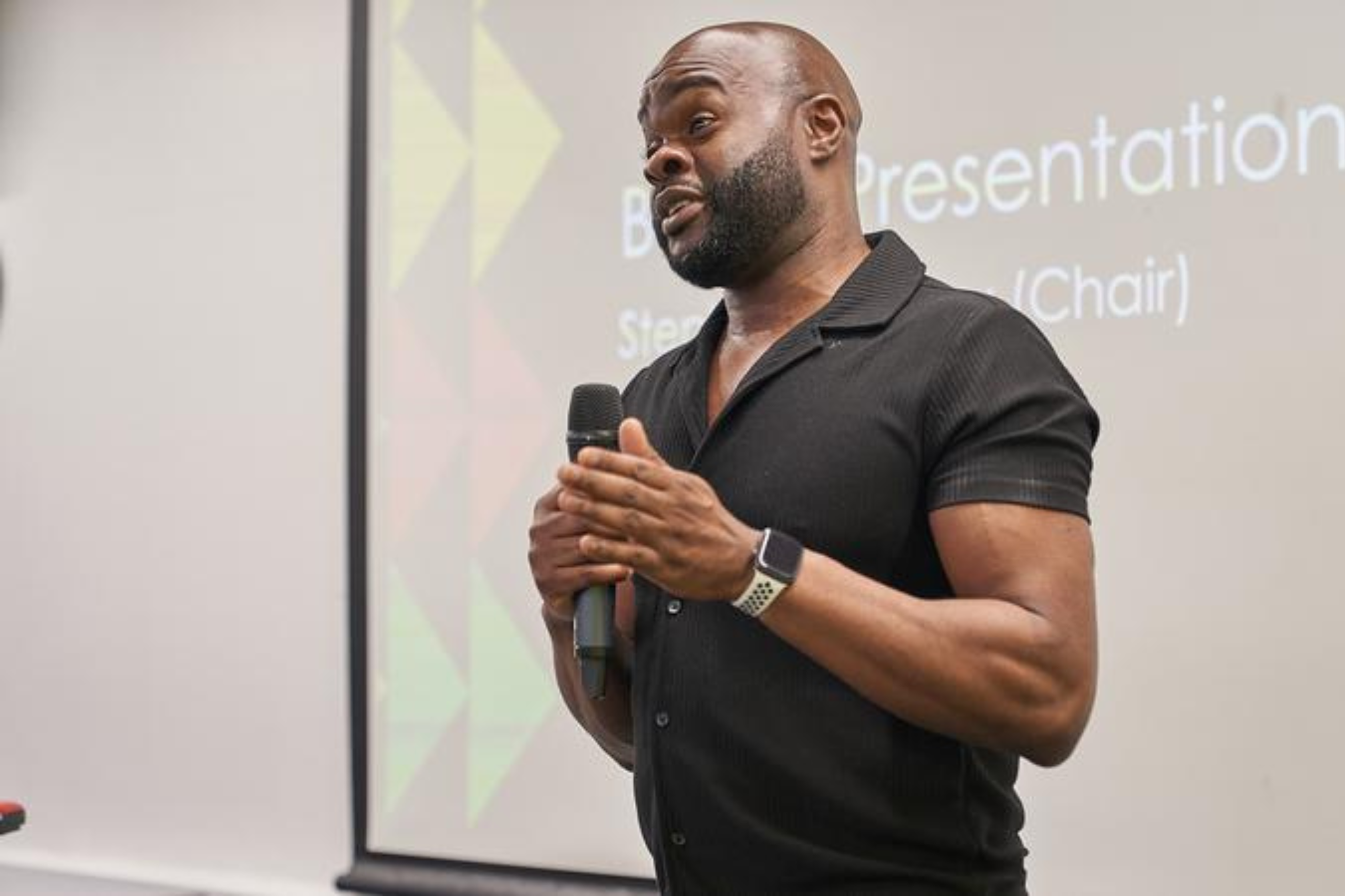Reflections from a peer learning session, by Stephen Bunbury
In January 2025, I had the privilege of facilitating a peer session for London charity chairs and co-chairs, hosted by the Association of Chairs, focusing on disability inclusion in governance. This event brought together leaders from across the sector to engage in honest, practical discussions about embedding disability inclusion on boards – not as a “nice to have,” but as an essential foundation for good governance and inclusion.
As co-chair of Inclusion London, where I’ve spent nearly two years as co-chair and nearly three years as a trustee championing disability inclusion and recruiting trustees with lived experience, I know how transformative (and challenging) this work can be. This session was an opportunity to share lessons from practice, draw on participants’ expertise, and explore solutions to common barriers facing boards today.
The challenge: Skills gaps and representation
One of the case studies we explored (drawn from real scenarios) centred on a disabled-led charity board that had identified a skills gap in financial management and strategic planning. Trustees were deeply committed to ensuring representation of lived experience but struggled to recruit candidates who could bring both expertise and diverse lived experiences of disability, particularly where disability intersects with other identities such as race, gender, and class.
This challenge resonated strongly with many participants. Leaders acknowledged the tension between technical competence and authentic representation, a false dichotomy that can arise when recruitment practices are not intentionally inclusive or when pathways into governance for disabled people remain inaccessible.
The discussion was strikingly candid. Chairs shared stories of structural barriers from inaccessible recruitment materials to rigid notions of “board readiness.” Several reflected on the hidden biases in traditional recruitment, where candidates are often sourced through existing (and narrow) networks.
We also heard powerful accounts of what happens when boards successfully centre disabled voices. Boards that prioritise lived experience report better decision-making, stronger alignment with the communities they serve, and a shift from tokenistic consultation to genuine co-production. Importantly, participants highlighted that disabled trustees bring expertise not just in disability issues, but across all aspects of governance and strategy.
Practical steps for chairs and boards
From the case studies and group discussions, several practical strategies emerged:
Reframe recruitment
- Actively value lived experience as a form of expertise, alongside professional skills.
Use inclusive, intersectionally-aware language in adverts, making clear your commitment to accessibility and equity. Examples could include:
“We encourage applications from candidates who identify as Black, Asian, or from other racially minoritised backgrounds, LGBTQ+, disabled, or from underrepresented socio-economic groups.”
“We strive to build a workplace where different life experiences, cultures, and perspectives are recognised and celebrated.”
- Broaden outreach – advertise through grassroots disabled people’s organisations, community networks, and platforms aimed at underrepresented groups.
Remove structural barriers
- Audit recruitment processes: Are application forms accessible? Are role descriptions unnecessarily restrictive?
- Offer alternative formats and flexible approaches to interviews (e.g., online options, plain English, longer response times).
- Ensure meetings, papers, and decision-making processes are accessible (captioning, interpreters, easy read formats, hybrid participation).
Build skills through mentorship and training
- Pair trustees with complementary skills (e.g., a finance expert mentoring a trustee with lived experience, and vice versa).
- Collaborate with leadership development programmes for disabled people to create affordable training opportunities.
- Explore pro bono partnerships with professionals or organisations willing to share expertise.
Balance/manage short and long-term needs
- In the short term, consider co-opting external advisors to cover specialist gaps while recruiting for diversity.
- Long-term, develop a pipeline of disabled leaders by investing in community mentorship, internships, and governance training.
Embed culture, not just compliance
- Foster a culture where diverse perspectives are genuinely valued, not tokenised.
- Regularly review board culture and decision-making. Are all voices being heard and acted upon?
- Make inclusion a standing agenda item, signalling its ongoing importance rather than a one-off initiative.
Lessons from practice: My reflections
Recruiting disabled trustees and building inclusive boards has been one of the most rewarding (and humbling) parts of my leadership journey. At Inclusion London, I saw first-hand how representation shapes decisions: when disabled people lead, strategies better reflect the realities of the communities served.
Yet progress is not consistent or even. Too many talented disabled leaders are still excluded due to assumptions about capacity, inflexible processes, or lack of support. Intersectional barriers (faced particularly by disabled women and people from racialised backgrounds) compound this exclusion. Addressing these inequities requires intentional action, not passive hope.
The peer session reaffirmed that change and transformation are possible when chairs and trustees share openly, listen deeply, and commit to learning together. The richness of dialogue at the event (leaders exchanging practical tips, acknowledging challenges, and celebrating wins) was inspiring. This collective energy is what drives systemic change.
Why this matters
Charity boards make decisions that directly impact people’s lives. Without disabled voices at the table this results in losing out on talent. Authentic inclusion is not simply about meeting a quota; it is about better governance, richer insight, and more equitable outcomes.
As chairs, we hold significant influence, not just over recruitment, but over culture, accessibility, and priorities. By embedding inclusion at every level, we create boards that reflect and respect the communities we serve.
A call to action
If you chair or sit on a board, I encourage you to reflect and ask:
- Who is missing from our table or conversations?
- What barriers (visible or invisible) are we maintaining?
- How can we act now to ensure our governance reflects the diversity of our communities?
The work of inclusion is ongoing. It demands humility, persistence, and courage. But the reward (a stronger, inclusive, more effective board) is worth it.
Let’s commit, together, to ensuring disabled people are not just consulted but are leading, shaping, and transforming our sector.
Bio:
Stephen Bunbury is a Reader in Law and Co-Chair of the BME Colleague Network at the University of Westminster and Co-Chair of Inclusion London. At the University of Westminster, he serves as the institutional lead for Academic Integrity and the Academic Integrity Lead for Westminster Law School. He is also the Assessment Lead for Westminster Law School, with responsibility for external examining. He previously served as the Equality and Diversity Lead and Disability School Tutor for Westminster Law School. His research interests focus on inclusive legal education and disability law and practice.
- Find out more about disability inclusion and the social model of disability on Inclusion London’s website
- Read Stephen’s article: How the social model may hold the key to transformative thinking about disability discrimination, International Journal of Discrimination and the Law 19.1 (2019): 26-47.


